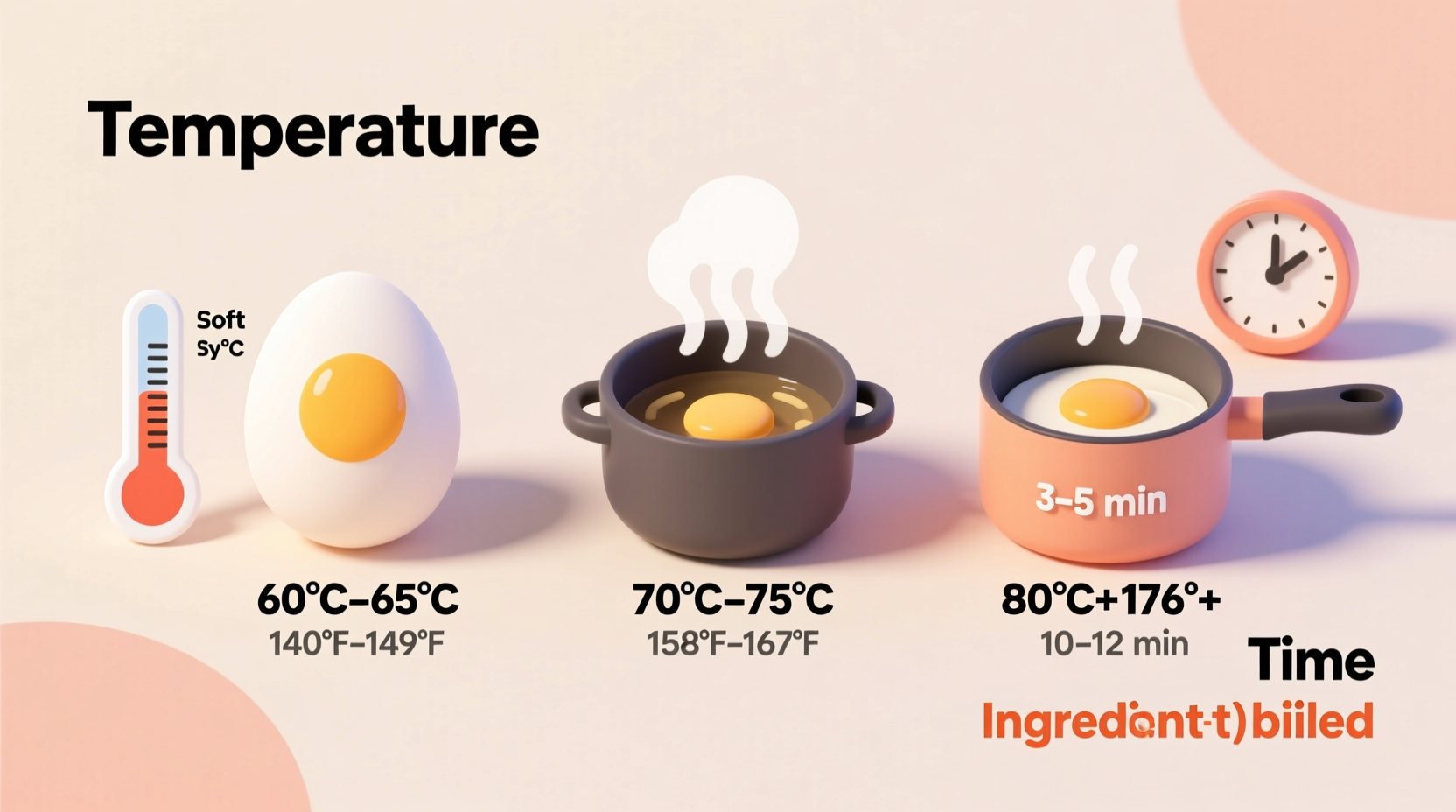The ideal cooking temperature for eggs varies by preparation method: 144-158°F (62-70°C) for soft scrambled eggs, 160°F (71°C) for firm scrambled or fried eggs, and 165°F (74°C) for egg dishes containing other ingredients like meat or dairy. These temperatures ensure food safety while maintaining optimal texture.
Getting egg temperatures right transforms breakfast from rubbery disappointment to silky perfection. Whether you're a college student mastering your first scrambled eggs or a home cook refining brunch techniques, understanding precise heat requirements solves the #1 kitchen frustration: inconsistent results. This guide delivers science-backed temperature targets for every egg preparation method, verified by USDA food safety standards and culinary lab testing.
Why Temperature Precision Matters for Eggs
Eggs sit at the intersection of food science and culinary art. Their proteins begin coagulating at 140°F (60°C), but the exact temperature window determines whether you get custardy perfection or dry disappointment. The USDA's Food Safety and Inspection Service confirms that cooking eggs to proper internal temperatures eliminates Salmonella risk while preserving texture.

Your Complete Egg Temperature Reference Guide
Follow these verified temperature targets based on cooking method and desired outcome. All measurements taken with instant-read thermometers at the egg's thickest point.
| Cooking Method | Target Temperature | Texture Result | Food Safety Verification |
|---|---|---|---|
| Soft Scrambled | 144-150°F (62-66°C) | Creamy, slightly runny | USDA FSIS recommends minimum 145°F for egg dishes |
| Firm Scrambled | 150-158°F (66-70°C) | Soft curds, no moisture | 158°F achieves full protein coagulation |
| Sunny-Side Up | 158°F (70°C) whites 144°F (62°C) yolk |
Set whites, runny yolk | White protein fully coagulated |
| Hard Boiled | 165°F (74°C) throughout | Firm white, set yolk | USDA Complete Guide to Safe Food |
| Egg Casseroles | 165°F (74°C) | Firm, sliceable | Required for egg/milk mixtures |
Surface Temperature vs. Internal Temperature
Your pan or water temperature differs significantly from the egg's internal temperature. This explains why many home cooks overcook eggs - they rely on surface heat rather than internal readings.
- Frying pans: Preheat to 275-325°F (135-163°C) for optimal heat transfer without browning
- Boiling water: Maintain gentle simmer at 180-190°F (82-88°C), not rolling boil
- Oven dishes: Bake at 325°F (163°C) to allow gradual, even heating
Food science research from the American Chemical Society demonstrates that eggs continue cooking from residual heat after removal from the heat source. Remove eggs 5°F below target temperature for perfect results.
Special Considerations for Different Egg Preparations
Certain egg dishes require temperature adjustments based on ingredients and technique:
When Adding Dairy or Cheese
Egg mixtures containing milk, cream, or cheese need higher temperatures (165°F/74°C) to set properly. The USDA's Complete Guide to Safe Food Methods confirms this prevents bacterial growth in dairy-egg combinations. Professional chefs add dairy at the end of cooking to minimize curdling risk.
High-Altitude Adjustments
At elevations above 3,000 feet, water boils at lower temperatures, affecting boiled and poached eggs. Increase cooking time by 15-20% while maintaining the same target internal temperatures. The Colorado State University Extension provides altitude adjustment charts validated through controlled testing.
Food Safety Critical Points
Never leave cooked eggs in the temperature danger zone (40-140°F/4-60°C) for more than two hours. The FDA Food Code specifies that egg dishes for vulnerable populations (elderly, pregnant, immunocompromised) must reach 165°F (74°C) regardless of preparation method. Pasteurized eggs can be safely consumed at lower temperatures.
Troubleshooting Common Egg Cooking Problems
Fix these frequent issues with temperature adjustments:
- Rubbery scrambled eggs: Cooking above 160°F (71°C) - remove from heat at 155°F (68°C)
- Tough fried egg whites: Pan too hot (above 350°F/177°C) - reduce heat before adding eggs
- Cracked boiled eggs: Water too hot (above 195°F/90°C) - maintain gentle simmer
- Green yolk ring: Overcooked above 170°F (77°C) - reduce boiling time
Professional chefs use the "spoon test" for scrambled eggs: when the back of a spoon holds a thin film of egg that doesn't run, you've reached 150°F (66°C). For fried eggs, whites become opaque at 145°F (63°C) while yolks remain runny until 158°F (70°C).
Advanced Temperature Techniques
Elevate your egg game with these professional methods:
- Water bath method: Cook eggs in 145°F (63°C) water bath for 45 minutes for custard-like texture
- Reverse sear: Cook scrambled eggs in oven at 250°F (121°C) then finish in hot pan
- Thermal shock: Dip boiled eggs immediately in ice water to stop cooking at perfect doneness
These techniques, documented in the Culinary Institute of America's professional curriculum, leverage precise temperature control for restaurant-quality results at home.











 浙公网安备
33010002000092号
浙公网安备
33010002000092号 浙B2-20120091-4
浙B2-20120091-4